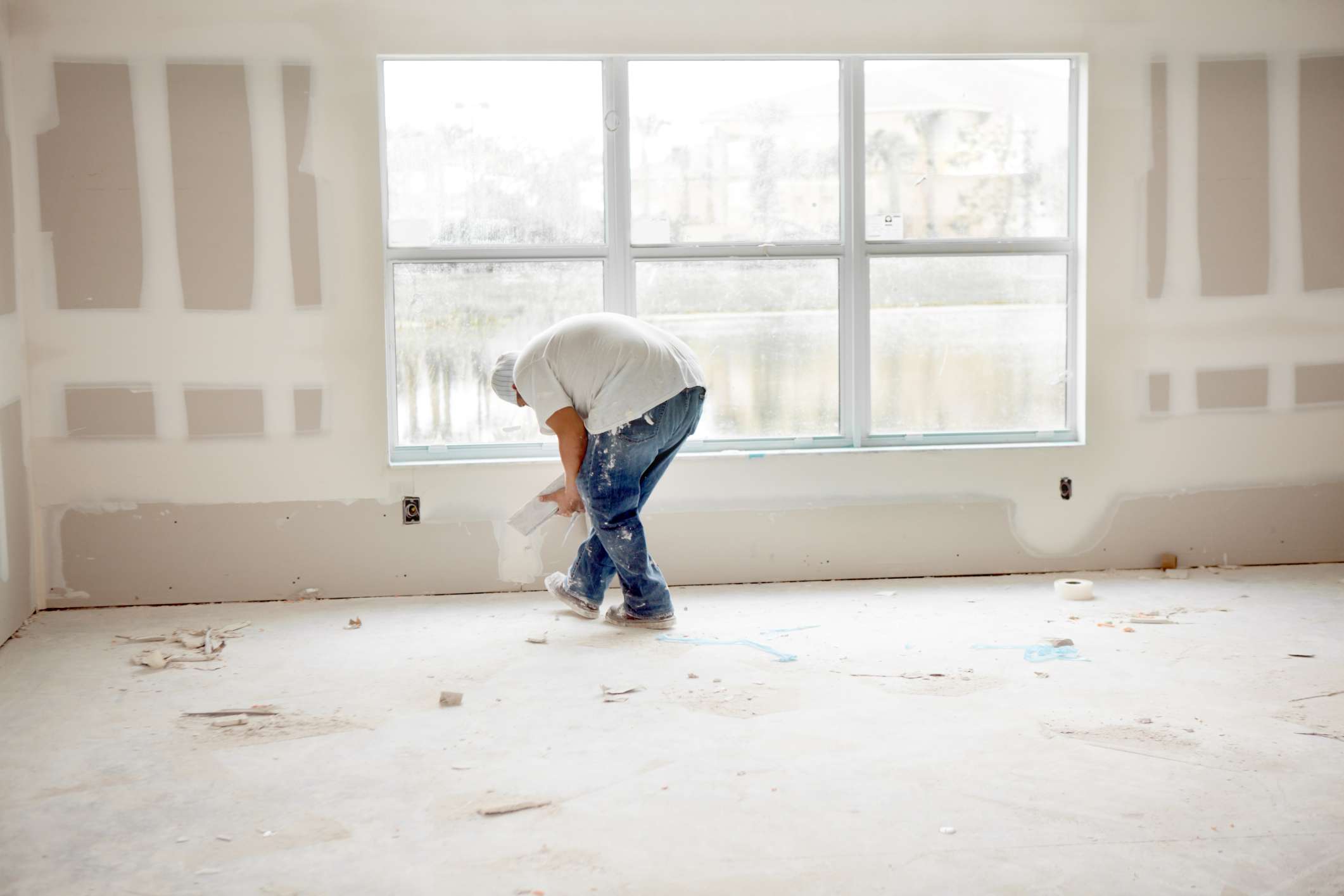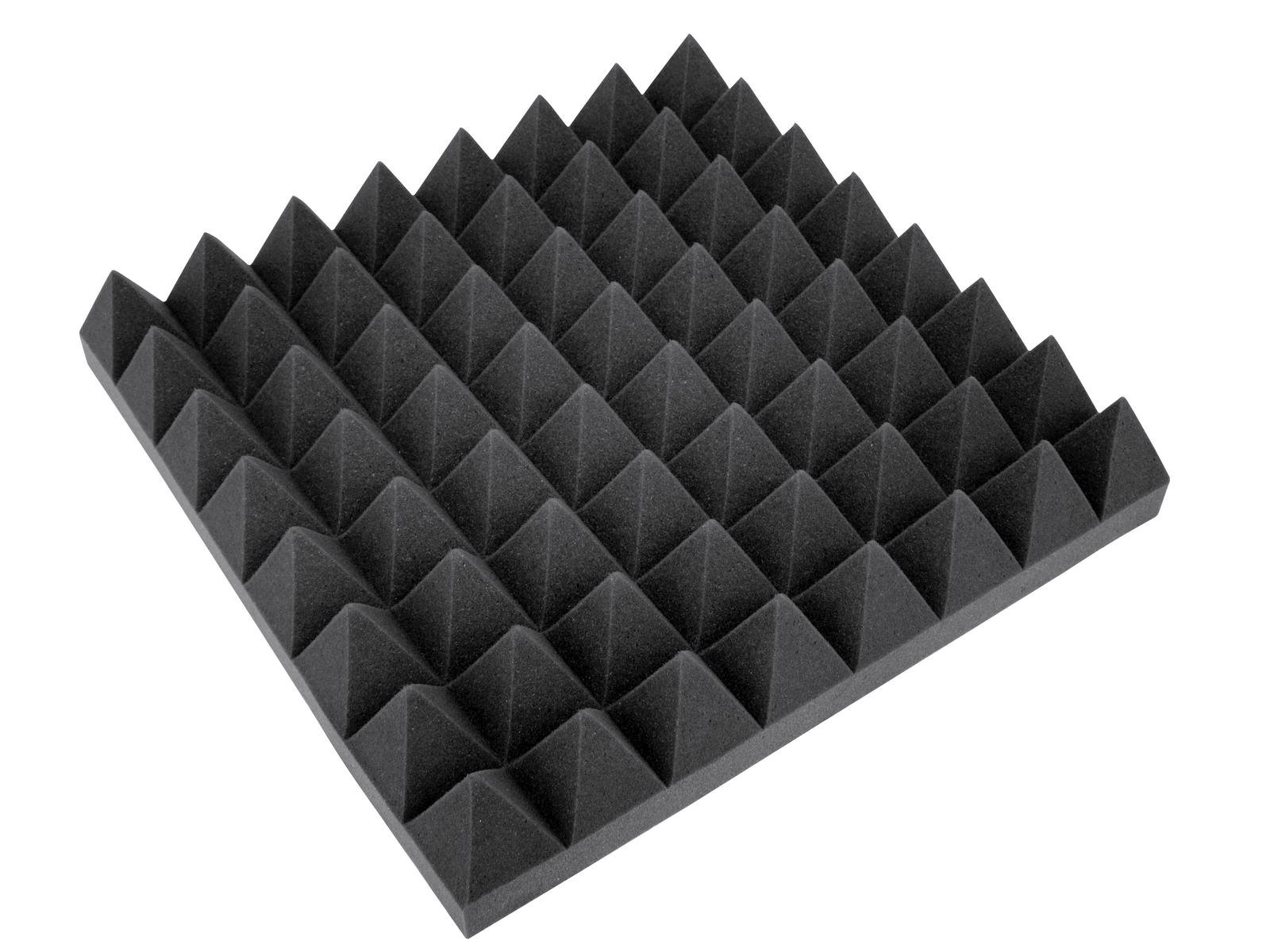Home>Production & Technology>Soundproofing>What Does Soundproofing Bass Traps Do


Soundproofing
What Does Soundproofing Bass Traps Do
Published: January 27, 2024
Discover the benefits of using soundproofing bass traps to reduce noise and enhance sound quality. Learn how they work and why they are essential for soundproofing projects.
(Many of the links in this article redirect to a specific reviewed product. Your purchase of these products through affiliate links helps to generate commission for AudioLover.com, at no extra cost. Learn more)
Table of Contents
Introduction
Soundproofing is a crucial aspect when it comes to creating a peaceful and quiet environment, especially in our increasingly noise-filled world. Whether you’re looking to reduce the noise from outside traffic, control the sound within a space, or create a professional recording studio, soundproofing is essential. One effective method of soundproofing is the use of bass traps.
Bass traps are acoustic devices specifically designed to capture and absorb low-frequency sound waves, commonly known as bass. These sound waves tend to build up in corners and other confined spaces, causing distortion and muddiness in the sound. By strategically placing bass traps in these areas, you can prevent the excessive energy of bass frequencies from interfering with the overall sound quality.
In this article, we will explore the concept of bass traps in more detail, including how they work, the benefits they provide for soundproofing, and the different types available. We will also discuss the proper installation techniques and common mistakes to avoid when using bass traps. Whether you’re a musician, audio engineer, or simply someone interested in improving the sound quality in your living space, understanding how bass traps can enhance your acoustics is essential.
What are Bass Traps?
Bass traps are acoustic devices designed to reduce the buildup of low-frequency sound waves in a room. These sound waves, primarily generated by subwoofers and other bass-heavy audio sources, can create a boomy and unbalanced sound. The purpose of bass traps is to absorb these excessive bass frequencies, preventing them from reflecting or bouncing around the room.
Bass traps are typically made from acoustic foam or mineral wool materials that have high sound absorption properties. They come in various shapes and sizes, but the most common configurations are corner bass traps and panel bass traps. Corner bass traps are specifically designed to be placed in the corners of a room, where bass energy tends to accumulate the most. On the other hand, panel bass traps can be mounted on walls or ceilings to address not only the bass frequencies but also the mid and high frequencies.
The main goal of bass traps is to create a more balanced and controlled sound environment. By absorbing the excess bass energy, the reflection and resonance of low frequencies are minimized, resulting in a tighter, more focused sound. This is particularly important in critical listening environments such as recording studios, home theaters, and music practice spaces, where accurate sound reproduction is desired.
It’s worth noting that bass traps are not meant to completely eliminate bass frequencies. Instead, they aim to reduce the intensity of bass buildup and create a more even sound distribution throughout the room. This helps to eliminate unwanted room resonances, improve clarity, and enhance the overall listening experience.
How Do Bass Traps Work?
To understand how bass traps work, it’s important to first grasp the concept of sound waves and how they behave in a space. When low-frequency sound waves, such as bass, hit a wall or corner, they tend to build up and create areas of high pressure. This can lead to resonances, standing waves, and an overall unbalanced and muddy sound.
Bass traps work by employing two essential principles: absorption and diffusion. Absorption is the process by which the energy of sound waves is converted into heat or other forms of energy, effectively reducing the sound level. When installed in a room, bass traps absorb the energy of low-frequency sound waves, preventing them from reflecting and bouncing back into the space.
Diffusion, on the other hand, involves scattering sound waves in different directions. This helps to break up the standing waves and resonances that can occur in a room. Some bass traps are designed to have diffusive properties, dispersing the sound energy and preventing it from becoming concentrated in one area.
Bass traps are typically constructed with materials that have high sound absorption coefficients, such as dense foam or mineral wool. These materials are effective at absorbing low-frequency sound waves and reducing their intensity. The shape and placement of bass traps also play a crucial role in their functionality. The corners of a room are particularly important to address, as bass frequencies tend to accumulate there. Corner bass traps are designed to fit snugly into the corners, effectively capturing and absorbing the excess bass energy.
By strategically placing bass traps throughout a room, you can minimize the buildup of bass frequencies, control room resonances, and create a more balanced and accurate sound environment. This is particularly beneficial in recording studios, where precise monitoring and accurate sound reproduction are essential for producing high-quality recordings. Bass traps also find applications in home theaters, gaming rooms, and any space where sound quality and clarity are important.
Soundproofing Benefits of Bass Traps
Bass traps offer several soundproofing benefits that can greatly enhance the overall acoustic performance of a room. Here are some key advantages of incorporating bass traps in your soundproofing efforts:
- Reduced Noise Leakage: Bass traps help minimize the transmission of low-frequency sound waves from one room to another. By absorbing the bass energy, they prevent it from traveling through walls, floors, or ceilings, resulting in a quieter environment.
- Improved Privacy: If you live in a shared space or have neighbors nearby, reducing noise leakage can help maintain privacy. Bass traps can help diminish the transmission of bass frequencies, ensuring that your activities remain undisturbed.
- Enhanced Sound Quality: Excessive bass buildup can cause muddiness, resonance, and an unbalanced sound. By effectively absorbing and diffusing the low-frequency sound waves, bass traps improve the clarity, definition, and overall quality of the audio in a room.
- Prevention of Room Resonances: Room resonances occur when certain frequencies reinforce each other, creating peaks and valleys in the sound response. Bass traps help minimize these resonances by absorbing the excessive bass energy and reducing their impact on the overall room acoustics.
- Reduced Echo and Reverberation: Excessive bass can contribute to echo and reverberation in a room. By diminishing the intensity of low-frequency sound waves, bass traps help reduce these unwanted echoes, resulting in a cleaner and more intelligible sound.
- Optimized Recording and Mixing Environment: For musicians, audio engineers, and recording enthusiasts, having an acoustically accurate environment is crucial. Bass traps help create a more balanced, controlled, and neutral listening space, allowing for accurate monitoring and precise mixing decisions.
Overall, bass traps significantly contribute to a more soundproofed and acoustically pleasing space. Whether you’re looking to create a quiet home office, a professional recording studio, or simply enhance the audio quality in your living room, incorporating bass traps in your soundproofing strategy is a wise investment.
Improved Acoustics with Bass Traps
Bass traps play a crucial role in improving the acoustics of a room by addressing the low-frequency sound waves that often cause acoustic issues. Here are some ways in which bass traps contribute to enhanced room acoustics:
- Reduced Standing Waves: Standing waves occur when sound waves reflect between parallel surfaces, creating areas of reinforcement and cancellation. Bass traps absorb the excessive low-frequency energy, helping to minimize standing waves and the resulting uneven frequency response.
- Taming Room Resonances: Room resonances are frequencies at which the sound waves within a room resonate and build up, creating peaks and dips in the frequency response. Bass traps help by absorbing and dissipating these resonant frequencies, leading to a more balance and accurate acoustic environment.
- Balanced Sound Distribution: Excessive bass buildup can cause an unbalanced sound with an exaggerated low-end response. By absorbing the bass energy, bass traps help create a more evenly distributed sound throughout the room, ensuring a more accurate representation of the audio being played or recorded.
- Improved Clarity and Detail: Excessive bass can mask or blur the finer details in the audio, making it harder to distinguish individual elements. Bass traps help by reducing the bass buildup and creating a clearer and more defined sound, allowing for better clarity and detail in the audio reproduction.
- Enhanced Imaging and Soundstage: Bass traps can contribute to a more accurate and expansive soundstage. By reducing reflections and resonances, bass traps help improve the imaging, separation, and localization of sound sources, creating a more immersive listening experience.
- Controlled Reverb and Decay: Bass traps can help regulate the decay time and reverb in a room. Excessive bass can cause a long, lingering reverb that muddies the sound. By absorbing the bass frequencies, bass traps prevent excessive reverberation, resulting in a cleaner, more controlled sound.
The installation of bass traps in strategic locations, along with other soundproofing and acoustic treatments, can significantly enhance the overall listening experience and create an environment that is conducive to critical listening, recording, or simply enjoying high-quality audio.
Different Types of Bass Traps
There are several different types of bass traps available, each with its own design and functionality. Here are some of the most common types of bass traps:
- Corner Bass Traps: As the name suggests, corner bass traps are designed to be placed in the corners of a room. These traps take advantage of the tendency of low-frequency sound waves to accumulate in corners by absorbing and diffusing the bass energy. They come in various shapes, such as triangular or wedge-shaped, and are highly effective at addressing corner bass buildup.
- Panel Bass Traps: Panel bass traps, also known as membrane bass traps, are flat panels made of porous materials, such as foam or mineral wool, that are hung on walls or ceilings. These traps are effective not only at absorbing bass frequencies but also at addressing mid and high frequencies. They can be customized in terms of size, thickness, and placement to target specific acoustic issues in a room.
- Diaphragmatic Bass Traps: Diaphragmatic bass traps are designed to target the lower frequencies using a design that involves a front panel, an air gap, and a rear panel. This configuration allows for extensive absorption and diffusion of low-frequency sound waves. Diaphragmatic bass traps are typically more complex and can be custom-built or purchased from specialized acoustic companies.
- Membrane Bass Traps: Membrane bass traps consist of a thin, flexible membrane stretched over a framework. They work by vibrating in response to low-frequency sound waves, effectively converting the sound energy into heat. These traps are particularly effective at absorbing bass frequencies but may have limited effectiveness in addressing mid and high frequencies.
- Hybrid Bass Traps: Hybrid bass traps combine different principles and technologies to provide a comprehensive solution for sound absorption and diffusion. These traps often incorporate a combination of porous materials, air gaps, diaphragmatic elements, and membranous components to target a broader range of frequencies and address various acoustic issues.
It’s important to note that the type of bass traps you choose will depend on factors such as the specific acoustic issues in your room, available space, budget, and personal preferences. Consulting with an acoustic specialist or doing thorough research can help you determine the most suitable type of bass traps for your soundproofing and acoustic treatment needs.
Installing Bass Traps
Proper installation is key to maximizing the effectiveness of bass traps in your soundproofing efforts. Here are some steps to follow when installing bass traps:
- Identify the Problem Areas: Begin by assessing the room and identifying the areas with excessive bass buildup or acoustic issues. Pay particular attention to corners and other locations where sound tends to accumulate.
- Strategically Place Bass Traps: Determine the number and placement of bass traps based on the specific acoustic characteristics of the room. Corner bass traps should be placed in the corners where the walls meet the ceiling and floor. Panel bass traps can be mounted on walls and ceilings, focusing on areas with prominent bass reflections.
- Consider Room Size and Layout: The size and layout of the room will influence the number and type of bass traps required. Larger rooms may require more bass traps to adequately address bass buildup, whereas smaller rooms may benefit from fewer traps strategically placed in key locations.
- Follow Manufacturer’s Instructions: Follow the manufacturer’s instructions for the proper installation of the bass traps. Each type of trap may have specific guidelines for mounting or securing them to the walls or ceiling.
- Utilize Multiple Trap Types: Consider using a combination of corner bass traps and panel bass traps to address the different frequencies and acoustic issues within the room. This can result in a more comprehensive and balanced soundproofing solution.
- Experiment and Adjust Placement: After installing the bass traps, take some time to listen to the sound in the room and make adjustments if necessary. Moving the traps slightly or adding or removing traps in certain areas can help optimize the soundproofing and acoustics of the space.
- Periodically Assess and Maintain: Regularly assess the performance of the bass traps and make any necessary adjustments. Over time, the effectiveness of the traps may diminish, and they may require cleaning or replacement to maintain optimal soundproofing and acoustic performance.
Remember that the placement of bass traps will depend on the specific characteristics of your room. Experimentation and fine-tuning may be necessary to achieve the desired soundproofing and acoustic results. If you’re unsure about the installation process, it may be helpful to consult with an acoustic specialist or professional installer to ensure optimal placement and performance of your bass traps.
Common Mistakes to Avoid when Using Bass Traps
While bass traps can be highly effective in improving the soundproofing and acoustics of a room, there are some common mistakes that people make when using them. Here are a few key ones to avoid:
- Insufficient Coverage: One common mistake is not using enough bass traps or not placing them in the right locations. It’s important to properly assess the room and strategically place the traps in areas where bass buildup is prominent, such as corners or along walls with reflective surfaces. Insufficient coverage can lead to suboptimal soundproofing results.
- Poorly Balanced Acoustic Treatment: Another mistake is focusing exclusively on bass traps without considering other acoustic treatments. While bass traps are effective at addressing low-frequency issues, it’s important to have a comprehensive approach that includes diffusers, absorbers, and other treatments to address mid and high-frequency reflections and resonances.
- Ignoring Room Symmetry: Neglecting the symmetry of the room when placing bass traps can lead to uneven sound distribution and ineffective soundproofing. Take into account the room dimensions and ensure that bass traps are evenly distributed to address the bass buildup in all corners and areas of the room.
- Overlooking Maintenance: Bass traps, like any acoustic treatment, require regular maintenance to retain their effectiveness. Dust and debris can accumulate on the traps, reducing their absorption capacity. Periodically clean and maintain the bass traps to ensure they continue to perform optimally.
- Improper Installation: Incorrectly installing bass traps can limit their effectiveness. Follow the manufacturer’s instructions carefully and ensure that the traps are securely mounted or placed in the designated locations. Improper installation can result in reduced soundproofing or even damage to the traps.
- Not Evaluating Room Acoustics: It’s important to evaluate the acoustics of the room before and after installing bass traps to assess their effectiveness. This can be done through acoustic measurements or subjective listening evaluations. Failure to evaluate the room acoustics can make it difficult to identify any areas that may require further treatment or adjustments.
By avoiding these common mistakes, you can maximize the benefits of bass traps and achieve optimal soundproofing and improved room acoustics. If you’re unsure about the proper use and installation of bass traps, consulting with an acoustic specialist or professional can provide valuable guidance and ensure the best possible results.
Conclusion
Soundproofing is essential for creating a peaceful and high-quality sound environment, and bass traps are an effective tool in achieving this. By absorbing excessive bass energy and addressing low-frequency issues, bass traps contribute to improved acoustics, reduced noise leakage, enhanced sound quality, and greater control over room resonances.
When using bass traps, it’s important to consider the specific acoustic characteristics of the room and strategically place the traps to target areas of bass buildup, such as corners and reflective surfaces. Additionally, it’s crucial to complement bass traps with other acoustic treatments to address mid and high-frequency reflections and resonances.
Avoiding common mistakes, such as insufficient coverage, poor acoustical balance, neglecting room symmetry, and improper installation, ensures that bass traps deliver their desired benefits. Regular maintenance and evaluation of room acoustics also play a vital role in maintaining optimal soundproofing performance.
Whether you’re a musician, audio engineer, or someone seeking a quieter and more acoustically pleasing space, incorporating bass traps in your soundproofing strategy can make a significant difference. Properly installed and utilized, bass traps can create a more balanced and controlled sound environment, allowing for accurate monitoring, precise recordings, and immersive listening experiences.
Remember, if you’re unsure about the best approach for your specific needs, consulting with an acoustic specialist or professional can provide valuable insights and guidance. Invest the time and effort into implementing bass traps effectively, and you’ll reap the rewards of improved soundproofing and enhanced room acoustics.











